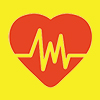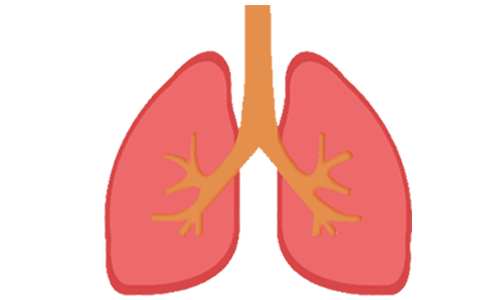About Lung Transplantation Team
The only Lung Transplant Programme in Hong Kong is formed and run by the collaboration of the Tuberculosis and Chest Unit (TBCU), Grantham Hospital (GH) and the Cardiothoracic Surgical Department (CTSD) of Queen Mary Hospital (QMH), under the Hong Kong West Cluster, Hospital Authority.
Milestones of Lung Transplantation Service
History
In early 1990s, the cardiothoracic surgical unit and the TB and Chest Unit in Grantham Hospital started to work on the provision of lung transplant service for end-stage respiratory patients in Hong Kong.
In 1994, the proposal of the establishment of a lung transplant programme was approved by the Hospital Authority. The lung transplant waiting list was established and the first potential recipient (A 39-year-old male patient with bronchiectasis) was put on the waiting list.
The first lung transplant was performed in July 1995 in Grantham Hospital. It was a single lung transplant for a female patient with diagnosis of lymphangioleiomyomatosis. In December 1995, the first heart-lung transplant was performed for a female patient with Eisenmenger Syndrome from congenital heart disease.
The first double lung transplant (in form of sequential bilateral lung transplant) was performed in 1997 for a female patient with diagnosis of bronchiectasis.
The lung transplant programme continued to operate in Grantham Hospital until 2008. Due to service development, the cardiothoracic surgical department in Grantham Hospital was relocated to Queen Mary Hospital. The Lung Transplant Programme continued to operate with the collaboration of the two clinical units, with the changes in service being that the lung transplant surgeries and the early post-transplant care being carried out in QMH. The pre-transplant work up and management, post-transplant rehabilitation and follow up continued to be undertaken at Grantham Hospital.
NOW
Formation of Lung Transplant Patient Group
20th Anniversary of Lung Transplant Programme
Start of Ex-vivo Lung Perfusion (EVLP) for Marginal Donor Lung Management
2015
Set up of comprehensive day-ward admission service for lung transplant work-up
2014
invited presentation of lung transplant experience in Hong Kong in Congress of Asian Society of Transplantation
2013
CTSD relocated to QMH
publication of lung transplant experience in Hong Kong in the journal Respirology
2008
1st double lung transplant (sequential bilateral lung transplant)
1997
1st Heart-lung Transplant
1st single lung transplant
Transplant surgeon: Dr. Clement SW Chiu
Physician in charge: Dr. Joseph Lee
1995
Working Group on lung transplant formed in GH
1992
As of 30 Jun 2025, a total of 116 lung transplantation was performed.
According to the latest international data, the survival rates at 1 year, 5 year and 10 years were 87.6%, 68.7% and 56.4% respectively.
1 Year
87.6%
5 Years
68.7%
10 Years
56.4%
 Lung Transplant Physicians
Lung Transplant Physicians
Dr S W Yan
Associate Consultant, TBCU, GH (Physician-in-charge)
Dr. C F Wong
Consultant, TBCU, GH (Physician)
Dr. C Y Cheung
Associate Consultant, TBCU, GH (Physician)
Dr. S L Fung
Associate Consultant, TBCU, GH (Physician)
 Lung Transplant Surgeons
Lung Transplant Surgeons
Dr. Timmy W K Au
Consultant, CTSD, QMH (Surgeon-in-charge)
Dr. Cally K L Ho
Consultant, CTSD, QMH (Surgeon)
Dr. Alan W S Suen
Consultant, CTSD, QMH (Surgeon)
Dr. Michael K Y Hsin
Associate Consultant, CTSD, QMH (Surgeon)
 Lung Transplant Nurse Coordinator
Lung Transplant Nurse Coordinator
Ms P L Cheng
RN, TBCU, GH
 Multi-disciplinary Assessment and Rehabilitation Team
Multi-disciplinary Assessment and Rehabilitation Team
(Grantham Hospital)
Physiotherapist: Mr. Derek Chan (in-charge)
Occupational Therapist: Mr. K L Leung (in-charge)
Clinical Psychologist: Ms. S S Ng (in-charge)
Medical Social Worker: Ms. Hope Lau (in-charge)
Dietitian: Ms Eliza Wong (in-charge)
Before Lung Transplantation
![]()
1. Who should be considered for lung transplantation?
Lung transplantation should be considered for patients with advanced lung disease whose clinical status has progressively declined despite maximal medical or surgical therapy. Candidates are usually symptomatic during activities of daily living and have a high risk of death due to lung disease in near future if lung transplantation is not undertaken. In addition, the potential candidates should have reasonably good functioning of other organ systems in order to achieve a good outcome.
The common underlying diseases of the patients undergoing lung transplantation in Hong Kong are chronic obstructive pulmonary disease (COPD), bronchiectasis, interstitial lung disease (ILD), and pulmonary arterial hypertension (PAH). Cystic fibrosis (CF) and alpha-1 antitrypsin deficiency are other common indications worldwide.
2. What tests are needed for evaluation before putting onto waiting list?
The evaluation is designed to assess the severity of the underlying lung disease and identify any factors that would adversely impact the success of the lung transplantation. The tests generally include:
- Assessment of respiratory system including lung function test, exercise capacity test, imaging of thorax
- Detailed examination of cardiovascular system
- Evaluation of other organ systems
- Screening for infection
- Screening for malignancy
- Clinical psychologist assessment
After Lung Transplantation
![]()
1. How would recipients be after lung transplantation?
Patients would need to take life-long immunosuppressive medications after transplant to prevent rejection. Meticulous medical attention and good family / social support are important. Rehabilitation and regular follow up is needed to achieve optimal outcome.
After the post-operative recovery, most recipients are able to resume an unencumbered lifestyle. Over 80 percent report no limitations in activities of daily living.
According to the latest international data,
the survival rates at 1 year, 5 year and 10 years were 87.6%, 68.7% and 56.4% respectively.
2. What are the potential complications/risks?
Post lung transplant complications include the followings:
Early
primary graft failure, infection, complications associated with Cardiopulmonary Bypass/extracorporeal membrane oxygenation, bleeding (which might require re-exploration), airway anastomosis complications, hyperacute and acute rejection, wound complications
Late
rejection (acute/chronic), infection, side effects of long term immunosuppression (e.g. diabetes mellitus, hypertension, cardiovascular diseases, post-transplant malignancies)
Psychological Stress
the post-operative course may be very rough, fluctuating and unpredictable. This poses great psychological stress to patients.





